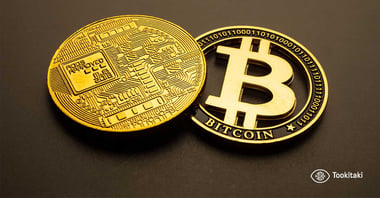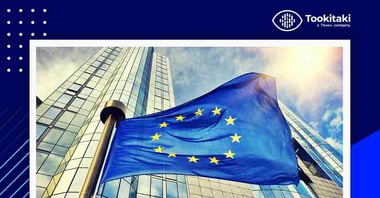Members of the European Parliament argued in proposed changes to the law released this month, that non-fungible token (NFT) trading platforms should be subject to EU anti-money laundering (AML) laws.
Lawmakers from the Green Party and Socialist representatives also appear to favour including self-managed crypto wallets and decentralised finance under a proposed regulation on money laundering.
This month, the bloc provisionally agreed on new laws known as the Markets in Crypto Assets Regulation (MiCA) that would license crypto companies and impose identity checks on transactions. But the European Commission was keen to leave detailed money-laundering procedures for a wider overhaul that also covers sectors such as banking.
Ernest Urtasun and Kira Marie Peter-Hansen of the Green Party, along with Aurore Lalucq and Csaba Molnár of the Socialist Party, have proposed a change to those laundering laws that would make NFT platforms - anyone who serves as an intermediary for importing, minting, or trading the assets that serve as proof of ownership of artwork or collectibles - "obliged entities" under EU money-laundering law, according to the document dated June 22.
To the same extent as banks, real estate brokers, art dealers, and other cryptocurrency providers, companies like NFT marketplace OpenSea might be required to assess the danger of illicit funding flowing through their networks and conduct identification checks on new customers and questionable transactions.
What are NFTs?
An NFT is a non-fungible token. “Non-fungible” means that it is unique and can’t be replaced with something else. For example, a bitcoin is fungible. You can trade one bitcoin for another, and you’ll have exactly the same thing.
A one-of-a-kind piece of art, however, is non-fungible. If you traded it for another piece of art, you’d have something different.
NFTs are created as a technique to safeguard digital files in a way that ensures ownership and establishes scarcity. An NFT can be sold, just like physical art, but the artist has the option of keeping the copyright, giving it to the buyer, or setting a cap on the number of secondary sales an owner is allowed.
A Background on NFTs
NFTs have exploded in popularity and awareness these past couple of years. Moreso since Facebook decided to change its name to Meta and go all-in on the metaverse. This challenged the public’s imagination, causing people to start speculating about digital real estate. NFTs are not new, however. Similar to cryptocurrencies, they started off slowly before being widely used. One of the leading fine art wholesalers in the world, Sotheby's, sold Quantum, the first-ever NFT, in June 2021 after it was minted in 2014.
By the end of 2021, more and more investment companies began buying land in virtual worlds like The Sandbox and Decentraland. On Nov. 23, a piece of digital land was sold for $2.43 million in Decentraland.
According to Footprint Analytics, the cumulative trading volume of NFTs was $21.5 billion by the end of 2021, compared to $120 million before 2021, a 200x jump in cumulative trading volume. The number of traders has also doubled from less than 1.3 million to 65.4 million by 2021, a 50x increase.
NFTs certainly didn’t slow down in 2022, they have dominated headlines and social media posts with the likes of influential figures, celebrities and mainstream brands joining the trend.
NFTs of famous internet moments have been sold to the highest bidder in one trend, most famously the first tweet from Twitter creator Jack Dorsey in 2006 (sold for $2.9 million in ether).
How and Where are NFTs Purchased?
The majority of NFTs are now bought with ether (ETH), which can be converted from dollars on exchanges like Coinbase, Kraken, and Gemini.
In contrast to bitcoin, which only acts as a payment network and cryptocurrency, blockchain networks like Ethereum and Solana let users construct apps that may store personal data and enforce rules for complex financial transactions.
These are what are referred to as "smart contracts," which are digital contracts that are recorded on a blockchain and are executed automatically when specific criteria are satisfied, such as when an NFT transfers ownership and the original artist receives royalties.
You must create a digital wallet to keep your cryptocurrency in order to purchase NFTs. You can connect these platforms to the marketplace where you intend to purchase NFTs, such as one of the marketplaces below, by using Gemini, Metamask, Binance, and Coinbase as examples. The sale of NFTs frequently involves placing a bid on the NFT in an auction system. You can purchase the NFT right now for a predetermined amount on several websites, like OpenSea.
Can NFTs Be Used to Launder Money?
In the area of financial crime and compliance, we are fully aware of the potential for opportunistic criminals to adopt new technologies or trends and exploit them for criminal acts if they are not appropriately regulated and monitored.
Like with fine art, the value of NFTs is discretionary, which gives people a lot of leeway in determining how much a particular digital creation is worth. This indicates that there is technically and essentially reason for concern over potential money laundering.
Similar to cryptocurrencies, an NFT can be instantly transferred from one wallet or owner to another. On the other hand, the unpredictability of NFTs' price is what makes them so attractive for money laundering. The market forces of supply and demand govern the price of Bitcoin, but the pricing of NFTs is highly speculative. In fact, an NFT that was just bought for €1 may be sold for €1,000,000 the next day. NFTs are appealing for exploiting legal transactions to launder illicit funds as a result of this.
The ability to track these transactions between wallets is made possible by blockchains, but sending money anonymously without disclosing the name of the wallet owner is now more straightforward than ever. These factors make the NFTs a severe threat to potential money laundering and economic fraud. Of course, this does not imply that NFTs are always utilised in financial crime.
Are NFTs Currently Regulated?
Currently, there are no laws or regulations that apply to NFTs in the majority of jurisdictions.
However, depending on the token's features, its intended use, the range of jurisdictions and regulatory frameworks where the NFT in question is minted or marketed, and where key players in a transaction are based, existing regulations governing digital assets and tokens may apply in some circumstances.
In the UK, for instance, trading an NFT for cash or other crypto assets necessitates registration in accordance with the 2017 Money Laundering Regulations.
Financial institutions must make sure they are consistently in compliance with changing regulatory requirements if they intend to or already enable any type of transaction involving crypto assets.
How Do We Prevent Money Laundering Via NFTs?
Because there is currently no regulation on these transactions, NFTs are particularly susceptible to being used as a tool for money laundering at the moment of purchase and sale. Despite the fact that the ownership certificates for these digital assets are stored on the blockchain, there are no Know Your Customer (KYC) or Anti-Money Laundering (AML) checks in place to confirm the source of funds before the transaction is completed, which gives criminals a lot of opportunities to inject fraudulent funds into the system. NFTs are also frequently purchased and sold using cryptocurrencies, which are also increasingly being used by criminals.
As with any new technology, law enforcement and regulators will get more familiar with the risks that NFTs present as time goes on and will be able to identify precise typologies that are then passed on to financial institutions to guide their risk policies and AML system rules. But if digital assets like NFTs are left unregulated, there is a good likelihood that money launderers would only find them more appealing because they provide a simple way to send large quantities of money across borders quickly.
How Can Financial Institutions Stay on Top of NFT Money Laundering?
The best method to protect your compliance operations is to establish a strong anti-financial crime strategy built on the newest RegTech innovations. Criminals continue to exploit cutting-edge technology to avoid capture, thus AML procedures must adopt digitalisation in a similar way.
Financial Institutions (FIs) need to have a well-designed AML compliance programme to adhere to all existing and emerging regulations. This should be a well-balanced combination of compliance personnel and technology. Having an in-house compliance team may be feasible only for large financial institutions. However, this is usually very expensive and impractical for smaller firms. They would have to rely more on highly intelligent process automation tools and platforms to sift out illegitimate transactions from large data sets.
We have created a first-of-its-kind AML Network to effectively solve the shortcomings of the present AML transaction monitoring environment.
Through collective intelligence and continual learning, our AML solution provides a novel means of identifying money laundering. Financial institutions will be able to capture shifting customer behaviour and stop bad actors with high accuracy and speed using this advanced machine learning approach, enhancing returns and risk coverage.
It detects suspicious cases and prioritises notifications with high accuracy without requiring any personal information. We use this technique to combat NFT money laundering successfully. Our solution can be scaled to cover any typologies spanning products, places, tactics, and predicate crime for the purpose of locating cryptocurrency-related funds.
Speak to one of our experts today to learn about our solution.
Anti-Financial Crime Compliance with Tookitaki?




